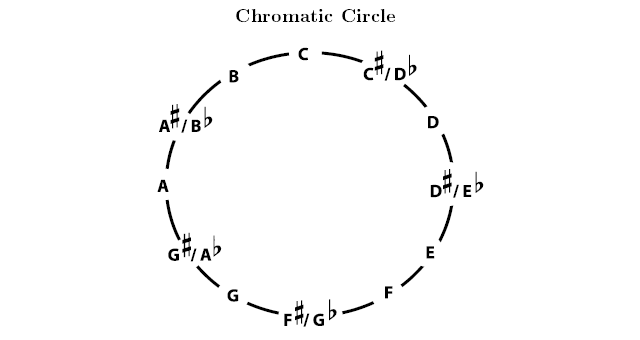Available under Creative Commons-ShareAlike 4.0 International License. Download for free at http://cnx.org/contents/2ad74b7b-a72f-42a9-a31b-7e75542e54bd@3.74
If you are transposing entire chords, and you know the name of the chord, you may find it easier to simply transpose the name of the chord rather than transposing each individual note. In fact, transposing in this way is simple enough that even a musician who can't read music can do it.
: 

Figure 6.25 Chromatic Circle
When transposing, you can use the chromatic circle both to change the name of the key (as above (Find the New Key)) and to change chord names, because the basic idea is the same; the entire
piece (chords, notes, and key) must move the same number of half steps in the same direction. If you're using a chromatic circle to transpose the names of all the chords in a piece, just make
sure that you move each chord name by the same amount and in the same direction.
- 3701 reads






